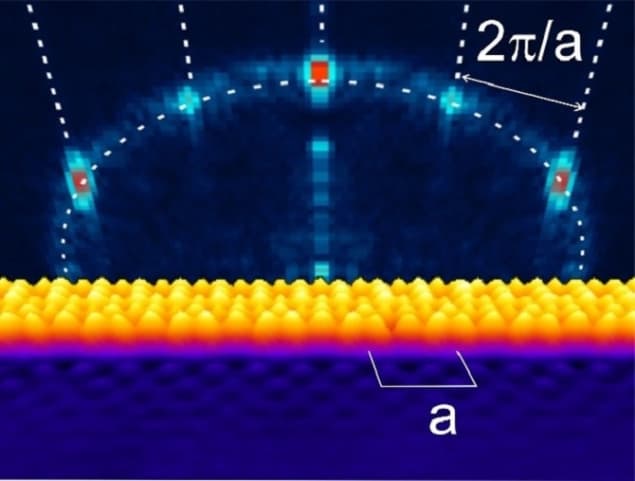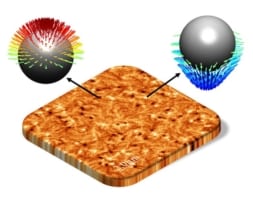
The means for exploiting quantum effects in the electronic behaviour of nanoscale materials has been an attractive attribute for next generation devices that is unique to nanomaterials – or is it? Researchers in Madrid, Spain, have now observed the quantization of electron energy levels in copper similar to the effects of confinement within a nanostructure, but in a copper sample with no nanoscale dimensions in the plane of the observed effects.
Roberto Otero and colleagues at Madrileño de Estudios Avanzados en Nanociencia (IMDEA-NANO), Instituto de Ciencia de Materiales de Madrid (ICMM-CSIC) and Universidad Autónoma de Madrid studied the electronic characteristics of the electrons forming a two-dimensional electron gas (2DEG) at the surface of a copper sample with the organic material tetracyanoquinodimethane (TCNQ) deposited on it. For their experiments they use low-temperature scanning tunnelling microscopy and spectroscopy, whereby an atomically sharp tip close to the surface with a potential difference between the tip and surface allows electrons with enough energy to “tunnel” through the insulating barrier to the tip and yield a current. This way Otero and team could map the energy and density of states of the electrons.
The TCNQ deposited self-assembles into regular nanoscale island structures that form an edge with one-dimensional periodicity on the copper. To observe conventional quantum confinement effects requires two edges so that the copper 2DEG is confined within the two, however, the researchers observed a two-dimensional array of maxima and minima electron energies like a 2D standing-wave pattern in the 2DEG with just one edge of TCNQ islands. They attribute the effect to Bragg diffraction – the same effect that gives CDs their iridescent colour – as waves of arriving electrons interfere with those reflected from the edge.
“To our knowledge, this is the first example in which the discretization of the electronic structure around solid-state nanostructures is not caused by electron confinement but by diffraction,” report the researchers in Physical Review Letters. Although other examples of wave-like electron behaviour exist, this kind of Bragg diffraction has eluded experimental observation altogether so far.
Edge matters
The researchers compared their results with the electron characteristics on bare copper and at a step edge in the copper as opposed to the edge of the TCNQ island structure. As expected they found that the conductivity oscillated with distance from the edge or scattering defect on the bare surface, with the period of the oscillations increasing with distance just as the distance between ripples from a stone dropped in a pond increase with distance. However, at the TCNQ edge they found additional contributions to the pattern of oscillations.

Holes reveal first fractional quantization
To understand their results the researchers examined transfer of momentum of the electron wave within the context of the laws of crystallography that govern incoming and outgoing waves as set out by Max von Laue, and which reduce to Bragg’s Law. In particular they examined the change in momentum parallel to the edge, where the superposition of scattered waves incident from different directions should give standing waves with different periodicities that blur out, but instead they found the electronic behaviour dominated by electrons with energy at specific quantized levels separated by the reciprocal of the periodicity of the edge of nanoislands. They suggest that the same effect is present at the copper step edge but since the spacing of the energy levels corresponds to the inverse of the spacing of the copper atoms, it is too large to observe.
They conclude in their report: “Since these energies are in turn determined by the periodicity of the scatterers, we conclude that Bragg-diffraction discretization offers a new avenue to tailor the DOS [density of states] at the Fermi level, and thus the physical properties of materials, from the superconducting transition temperature to their thermal stability.”
Full details are reported in Physics Review Letters.



